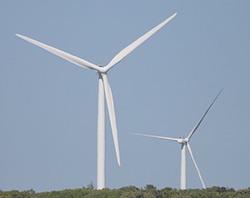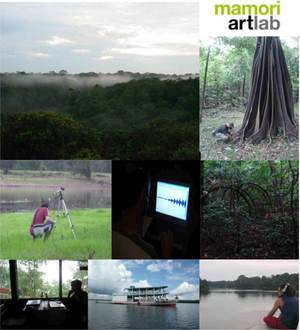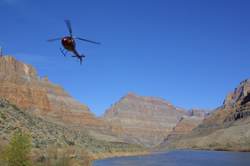Falmouth, Cape Cod Commission grapple with wind turbine noise
Human impacts, Wind turbines 2 Comments »The town of Falmouth, Massachusetts continues to grapple with noise complaints from a large number of landowners living within a half mile or so of the two wind turbines erected at the town Wastewater Treatment Facility. Acting Town Manager Heather Harper, who’s been the town’s point person on seeking solutions since the first turbine began operations just about one year ago, is currently dealing with fallout from the State DEP expressing concerns about the analysis presented by the town’s formal noise study, as well as tensions generated by a challenge to the initial permits granted to erect the turbines.

Harper says that while she anticipated some negative reactions to the turbines, the intensity of the response has surprised her. When the project was proposed, and throughout the planning process, local support was solid. “Many of the neighbors did participate in that process,” Harper notes in a recent article in the Falmouth Enterprise.
This is very similar the situation in some other communities when setbacks are in the quarter to third of a mile range, where enthusiastic local support is followed by surprise about the noise impacts once the turbines start turning. In Falmouth, an unusually large number of residents spoke up about their problems with noise: around fifty people participated in early informal community meetings held by neighbors trying to assess how widespread the issues were, and 18 banded together to hire a lawyer to help them address their concerns with the local planning boards. (See earlier AEI coverage of Falmouth issues)
The town is exploring options for reducing the sound at times, but doesn’t want to jeopardize the value of the turbines to the town, in generating electricity for municipal buildings. The neighbors rejected a proposal from the town to shut the turbines down between midnight and 3am in high winds, saying that noise issues were problems outside this time range. They are suggesting that permanent noise or wind monitoring stations be installed, that could trigger curtailments in conditions when noise is most bothersome (no details were offered in the Enterprise article about what these conditions may be). Christopher Senie, the neighbors’ lawyer, admits that there is no perfect solution, but they want to find a middle ground that minimizes neighbor’s negative experiences while making the turbines beneficial to the town.
Meanwhile, the Cape Cod Commission has approved new wind farm regulations for the region, which includes setbacks of 10x the rotor diameter, which for the Falmouth turbines would have amounted to 2700 feet. While noise problems can persist beyond this range, most complaints about chronic noise impacts come from residents under a half mile away. The CCC proposal also includes a so-far fairly vague provision that would allow closer siting if a noise study suggests sound will have “minimal impacts” to nearby residents; the plan is that future technical bulletins will clarify what that means.




 Many such small crustaceans are foundations of vast ocean food webs. Co-author
Many such small crustaceans are foundations of vast ocean food webs. Co-author 